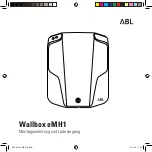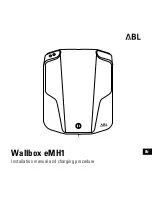
In such cases, Adaptive Brake Assist can:
R
intervene unnecessarily
R
not intervene
There is a risk of an accident.
Always pay careful attention to the traffic sit-
uation and be ready to brake. Terminate the
intervention in a non-critical driving situation.
G
WARNING
Adaptive Brake Assist does not react:
R
to people or animals
R
to oncoming vehicles
R
to crossing traffic
R
when cornering
As a result, the Adaptive Brake Assist may not
intervene in all critical conditions. There is a
risk of an accident.
Always pay careful attention to the traffic sit-
uation and be ready to brake.
Due to the nature of the system, particularly
complicated but non-critical driving condi-
tions may also cause Brake Assist to inter-
vene.
If Adaptive Brake Assist is not available due to
a malfunction in the radar sensor system, the
brake system remains available with full
brake boosting effect and BAS.
Adaptive brake lights
The adaptive brake lights warn following traf-
fic in an emergency braking situation:
R
by flashing brake lamps
R
the hazard warning lamps are activated
If you brake sharply from a speed of more
than 50 km/h or if braking is assisted by BAS
or BAS PLUS, the brake lamps flash rapidly. In
this way, traffic travelling behind you is
warned in an even more noticeable manner.
If you brake sharply from a speed of more
than 70 km/h to a standstill, the hazard warn-
ing lamps are activated automatically. If the
brakes are applied again, the brake lamps
light up continuously. The hazard warning
lamps switch off automatically if you travel
faster than 10 km/h. You can also switch off
the hazard warning lamps using the hazard
warning button (
Y
page 123).
ESP
®
(Electronic Stability Program)
General notes
i
Observe the "Important safety notes" sec-
tion (
Y
page 69).
ESP
®
monitors driving stability and traction,
i.e. power transmission between the tyres
and the road surface.
If ESP
®
detects that the vehicle is deviating
from the direction desired by the driver, one
or more wheels are braked to stabilise the
vehicle. The engine output is also modified to
keep the vehicle on the desired course within
physical limits. ESP
®
assists the driver when
pulling away on wet or slippery roads. ESP
®
can also stabilise the vehicle during braking.
ETS/4ETS (Electronic Traction System)
i
Observe the "Important safety notes" sec-
tion (
Y
page 69).
ETS traction control is part of ESP
®
. On vehi-
cles with 4MATIC, 4ETS is a component of
ESP
®
.
Traction control brakes the drive wheels indi-
vidually if they spin. This enables you to pull
away and accelerate on slippery surfaces, for
example if the road surface is slippery on one
side. In addition, more drive torque is trans-
ferred to the wheel or wheels with traction.
Traction control remains active if you deacti-
vate ESP
®
.
Important safety notes
i
Observe the "Important safety notes" sec-
tion (
Y
page 69).
Driving safety systems
73
Safety
Z
Содержание 176.012
Страница 2: ......
Страница 3: ......
Страница 5: ......
Страница 107: ...104...
Страница 121: ...118...
Страница 239: ...236...
Страница 308: ...Useful information 306 Loading guidelines 306 Stowage areas 307 Features 313 305 Stowing and features...
Страница 323: ...320...
Страница 324: ...Useful information 322 Engine compartment 322 ASSYST PLUS 327 Care 329 321 Maintenance and care...
Страница 339: ...336...
Страница 413: ...410...
Страница 414: ...411...
Страница 415: ...412...
Страница 416: ......
Страница 417: ......
















































